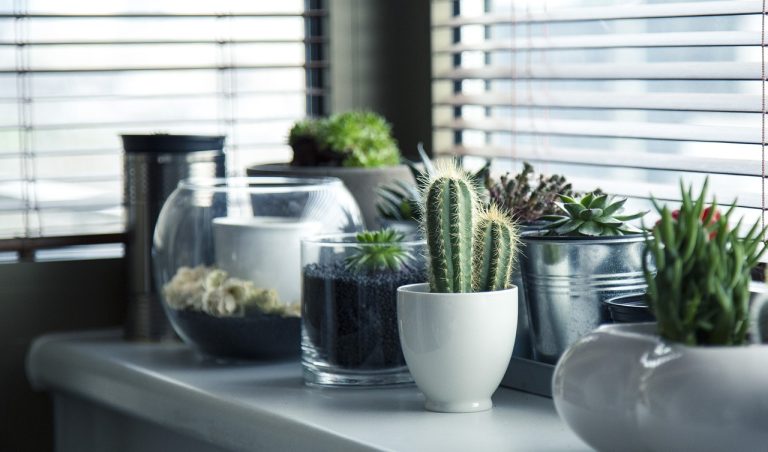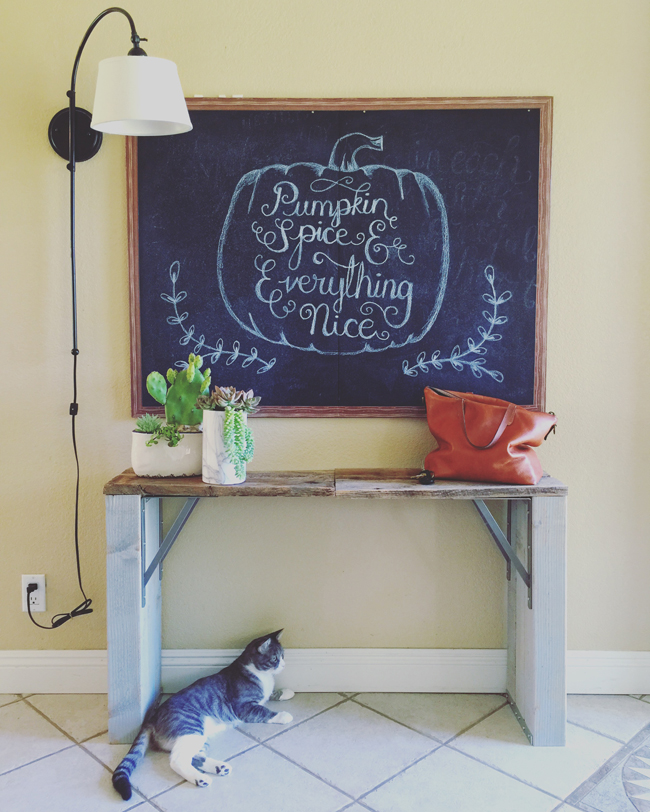If you’re an avid gardener in the UK, you might be wondering when is the perfect time to start planting for a beautiful summer garden. Well, worry not, because in this article, we’ll explore the ideal time to get your hands dirty and bring your garden to life. From blooming flowers to thriving vegetables, we’ll provide you with all the tips and insights you need to make the most of the UK’s summer planting season. So, grab your gardening tools and let’s discover the best time to sow the seeds of a flourishing garden!
Table of Contents
ToggleFactors to Consider
Climate and Region
When planning your summer planting in the UK, it is important to consider the specific climate and region where you are located. The UK has a temperate maritime climate, which means the weather can be quite variable throughout the year. It is important to take into account the average temperatures during the summer months and to consider whether your specific region tends to have more rainfall or drier conditions. Understanding the unique climate of your area will help you determine the best time to plant and the types of plants that will thrive.
Soil Temperature
Soil temperature is another important factor to consider when planning your summer planting. Different plants have different soil temperature requirements for successful germination and growth. It is generally recommended to wait until the soil temperature reaches a certain threshold before planting. For most summer crops, such as tomatoes and peppers, the soil temperature should be consistently above 50°F (10°C) before planting. Using a soil thermometer can help you track the temperature and ensure optimal planting conditions.
Frost Dates
Frost dates play a crucial role in determining the best time to plant in the UK for summer. While the UK generally has mild winters, there can still be a risk of late spring frosts in some areas. It is important to be aware of the average last frost date in your region. Planting too early before the risk of frost has passed can damage or kill your plants. Checking with your local gardening association or using online resources can help you determine the estimated last frost date for your specific area.
Planting Zones
Understanding your planting zone is essential when planning your summer planting in the UK. The UK is divided into different planting zones based on average temperatures and climate conditions. These zones help determine which plants are best suited for your area and when to plant them. The Royal Horticultural Society (RHS) provides a detailed planting zone map for the UK, which can be a valuable resource in determining the best time to plant and which plants are most suitable for your zone.
Preparations for Planting
Seed Selection
Choosing the right seeds is an important step in preparing for your summer planting. Consider the types of plants you want to grow and whether you prefer to start from seeds or purchase young seedlings. Some plants are better suited for direct sowing, while others benefit from being started indoors. When selecting seeds, pay attention to the recommended planting time on the seed packet. This information will give you a good sense of when the seeds should be planted for optimal growth and yield.
Seed Starting
For plants that benefit from an earlier start, starting seeds indoors can give you a head start on the growing season. This is especially important for slow-growing plants, such as tomatoes and peppers. Indoor seed starting allows you to control the environment, providing consistent warmth and moisture for successful germination. You will need trays or pots, a good germination mix, and access to natural or artificial light. Starting seeds indoors around 6-8 weeks before your last frost date will give the young plants plenty of time to grow and develop before transplanting them outside.
Indoor vs. Outdoor Planting
Deciding whether to plant your seeds indoors or directly sow them outdoors depends on several factors. Some plants, like root vegetables, do not transplant well and should be directly sown into the ground. On the other hand, starting seeds indoors allows you to get a head start on the growing season and protect young seedlings from adverse weather conditions. Consider the specific requirements of the plants you want to grow and the time you have available for seed starting. Remember to harden off indoor-grown seedlings before transplanting them to the garden to reduce transplant shock.
Spring Planting
March
March marks the beginning of spring in the UK, and it’s an opportune time to start your summer planting. As the days get longer and the weather gradually warms up, many plants can be sown or transplanted outdoors. Cool-season vegetables, such as radishes, lettuce, and peas, can be directly sown into the ground. It is also a good time to start sowing seeds indoors for warm-season crops, like tomatoes and peppers, which will later be planted outside once the threat of frost has passed.
April
April is a busy month for gardeners in the UK, with the weather becoming more favorable for planting a wide range of crops. As the soil continues to warm up, you can start planting heat-loving vegetables, such as beans, corn, and squash. Transplanting seedlings started indoors can also begin in April, such as eggplants and cucumbers. It is important to monitor the weather and be prepared to protect your plants from unexpected late frosts.
May
May is the time to fully embrace the summer season and plant your warm-season crops. By this time, the last frost dates have typically passed, and the soil is warm enough for most plants to thrive. Tomatoes, peppers, and other tender vegetables can be safely transplanted outdoors. May is also a great time to plant herbs and flowers to enhance your garden and attract beneficial insects. Take advantage of the longer days and warmer temperatures to establish and nurture your summer garden.
Early Summer Planting
June
June is the month when the summer garden truly comes alive. With longer days and warmer temperatures, there is an abundance of choices for planting in June. Many warm-season vegetables, such as zucchini, melons, and sweet potatoes, can be planted during this time. It is also an excellent time to sow quick-growing crops, such as salad greens and radishes, for a continuous harvest throughout the summer. Regular watering and proper care will help your plants thrive in the increasingly hot weather.
July
In July, the heat of summer is in full swing, and the garden requires careful attention. Watering and mulching become paramount to ensure the health and productivity of your plants. July is an ideal time for planting late-season crops that will mature in the fall, such as Brussels sprouts and winter squash. It is also a good time to sow cool-season crops like spinach and kale that will thrive in the cooler temperatures of late summer and early autumn.
Late Summer Planting
August
As August rolls around, it is important to plan your late summer planting carefully. While the weather may still be warm, the days are gradually getting shorter, and the temperatures will start to cool down. August is a great time to sow fast-growing crops, such as radishes and lettuce, which will mature before the first frost in the autumn. It is also a good time to plant cool-season crops that will thrive in the upcoming cooler months, such as carrots and beets.
September
September marks the transition from summer to autumn, and it is a critical time for planting certain crops. While the weather is still relatively warm, you need to be mindful of the approaching colder temperatures. It is a good time to plant hardy greens, such as kale and Swiss chard, which will continue to grow and provide a fresh harvest well into the cooler months. September is also a good time to sow green manure cover crops to improve soil fertility over the winter.
Choosing Summer Plants
Vegetables
When selecting vegetables for your summer garden, consider both warm-season and cool-season crops. Warm-season vegetables, like tomatoes, peppers, and cucumbers, thrive in the heat and require longer growing seasons. Cool-season vegetables, such as lettuce, spinach, and peas, prefer cooler temperatures and can be planted early in the summer for a spring-like harvest. Choose a variety of vegetables that complement each other in terms of growth habits and harvesting times, ensuring a continuous supply of fresh produce throughout the summer.
Herbs
Herbs are an essential addition to any summer garden, providing fragrant foliage and culinary delights. Many herbs, such as basil, cilantro, and dill, thrive in the warmth of summer and lend themselves well to fresh summer recipes. Consider your culinary preferences and choose a variety of herbs that will enhance your favorite dishes. Herbs can be planted in the ground or in pots, allowing for both practicality and aesthetics in your garden.
Flowers
Flowers add beauty and color to your summer garden, attracting pollinators and creating a welcoming environment. Consider planting a mix of annuals and perennials to provide a continuous display of blooms throughout the summer. Popular summer flowers include sunflowers, marigolds, and zinnias. Pay attention to the specific growing requirements of each flower variety and choose those that will thrive in your particular climate and soil conditions. Planting a variety of flowers will not only enhance the aesthetic appeal but also benefit the overall health of your garden.
Tips for Successful Planting
Prepare the Soil
Before planting, it is essential to prepare the soil to create optimal growing conditions for your plants. Start by removing any weeds or debris from the planting area. Loosen the soil with a garden fork or tiller to improve drainage and aeration. Incorporate organic matter such as compost or well-rotted manure to enrich the soil and provide essential nutrients. A healthy soil structure promotes root development and overall plant growth.
Provide Adequate Watering
Proper watering is crucial for the health and success of your summer garden. Most plants require regular watering, especially during hot, dry periods. Water deeply and thoroughly to encourage strong root growth and prevent shallow rooting. It is preferable to water in the early morning or evening to minimize evaporation. Consider using mulch or drip irrigation to help retain soil moisture and reduce water loss. Regularly monitor the moisture levels in the soil and adjust your watering schedule as needed to ensure adequate hydration for your plants.
Mulching
Mulching is an effective technique to conserve soil moisture, suppress weed growth, and regulate soil temperature. Apply a layer of organic mulch, such as straw, wood chips, or compost, around your plants. Mulch helps to retain moisture in the soil, reducing the need for frequent watering. Additionally, it acts as a natural barrier against weeds, minimizing competition for nutrients and sunlight. Mulching also insulates the soil, keeping it cooler during hot summer days and warmer during cooler nights, providing a more stable environment for plant roots.
Pruning and Maintenance
Regular pruning and maintenance are essential for promoting healthy plant growth and preventing disease. Remove any dead or diseased plant materials to prevent the spread of pathogens. Prune back overgrown branches to maintain the desired shape and size of your plants. Regularly inspect your garden for pests and take appropriate measures to control them. Weeding and removing any competing plants will help ensure that your chosen plants have access to the necessary nutrients and resources.
Utilizing Greenhouses and Poly Tunnels
Benefits of Greenhouses
Greenhouses offer several advantages when it comes to summer planting. They provide a controlled environment where you can start seeds earlier and extend the growing season. The warm and sheltered environment allows for optimal growth and protection against adverse weather conditions. Greenhouses also protect plants from pests and diseases, reducing the need for chemical interventions. They offer the opportunity to grow a wider range of plants, including those that are more delicate or require specific conditions.
Choosing the Right Structure
When selecting a greenhouse or poly tunnel for your summer planting, consider the size, material, and design that will best suit your needs. The structure should provide adequate space for your plants to grow and thrive. Choose a material that offers good insulation, such as glass or polycarbonate, to retain heat and protect against temperature fluctuations. The design should allow for proper ventilation, as excessive heat and humidity can be detrimental to plant health. Consider the available space in your garden and choose a structure that complements the overall aesthetics.
Proper Ventilation
Proper ventilation is crucial in a greenhouse or poly tunnel to maintain optimal growing conditions. Ventilation allows for the exchange of air, preventing the buildup of excessive heat and humidity. This can be achieved through the use of windows, vents, or fans. Ensure there are vents or openings at both the top and bottom of the structure to promote airflow. Regularly monitor the internal temperature and humidity levels and adjust the ventilation accordingly. Adequate airflow helps prevent the development of fungal diseases and promotes the overall health of your plants.
Temperature and Humidity Control
Controlling the temperature and humidity levels in your greenhouse or poly tunnel is essential for successful summer planting. Install a thermometer and hygrometer to monitor these parameters accurately. During the warmer months, it may be necessary to provide shading to protect the plants from excessive heat. Shade cloths or blinds are effective in reducing the intensity of sunlight. Watering the floor or using misters can help increase humidity levels if necessary. Maintaining proper temperature and humidity control will create optimal growing conditions and help your plants thrive.
Potential Challenges
Pests and Diseases
Pests and diseases can pose significant challenges to your summer garden. Insects like aphids, slugs, and caterpillars can damage your plants, while diseases like powdery mildew and blight can cause widespread damage. Regularly inspect your plants for signs of pests or diseases, and take appropriate measures to control them. This can include using organic pest control methods, such as handpicking pests or introducing beneficial insects. Proper sanitation, crop rotation, and the use of disease-resistant varieties can also help reduce the risk of pests and diseases.
Weeds
Weeds are another common challenge that gardeners face during the summer months. Weeds compete with your plants for nutrients, water, and sunlight, impacting their growth and yield. Regular weeding is crucial to keep the weeds under control. Mulching can also help suppress weed growth. Consider using organic weed control methods, such as hand-weeding or the use of natural weed killers, to avoid the use of chemical herbicides. By staying proactive and diligent in weed management, you can maintain a healthy and thriving garden.
Extreme Weather Conditions
Extreme weather conditions, such as heatwaves or heavy rainfall, can pose challenges to your summer garden. These conditions can cause stress to your plants and affect their growth and productivity. Provide shade or temporary coverings during heatwaves to protect your plants from excessive heat. Ensure proper drainage to prevent waterlogging during heavy rains. Mulching and regular watering will help maintain optimal soil moisture levels. Keep an eye on weather forecasts and take preventive measures when extreme conditions are predicted, such as providing additional support for tall plants or moving potted plants to more sheltered locations.
Extending the Growing Season
Using Cloches and Row Covers
Cloches and row covers are valuable tools for extending the growing season, especially in cooler climates. Cloches are individual protective covers that can be placed over individual plants to create a mini greenhouse effect. Row covers, on the other hand, are more extensive covers that can be used to protect entire rows or beds of plants. Both options help to retain heat and protect plants from frost, allowing for earlier planting in spring and later planting in autumn. They also provide protection against pests and create a microclimate that stimulates plant growth.
Protective Measures
To extend the growing season, consider using protective measures such as cold frames or hoop houses. Cold frames are essentially mini greenhouses that can be used to start seeds or protect young plants. They capture and retain heat, creating a favorable environment for plant growth. Hoop houses are larger structures that can cover rows or beds of plants. They provide a more controlled environment for temperature and humidity regulation, allowing for year-round gardening. By utilizing these protective measures, you can enjoy an extended growing season and maximize your harvest.
Succession Planting
Succession planting is a technique used to ensure a continuous supply of fresh produce throughout the summer. Instead of planting all of your crops at once, stagger your plantings over several weeks or months. This allows for a more prolonged harvest window and minimizes the risk of having a surplus of produce at one time. As one crop is harvested, another is planted in its place, ensuring a continuous rotation of crops and a steady supply of fresh vegetables. Succession planting can be done with both warm-season and cool-season crops, allowing you to make the most of your garden space and resources.









